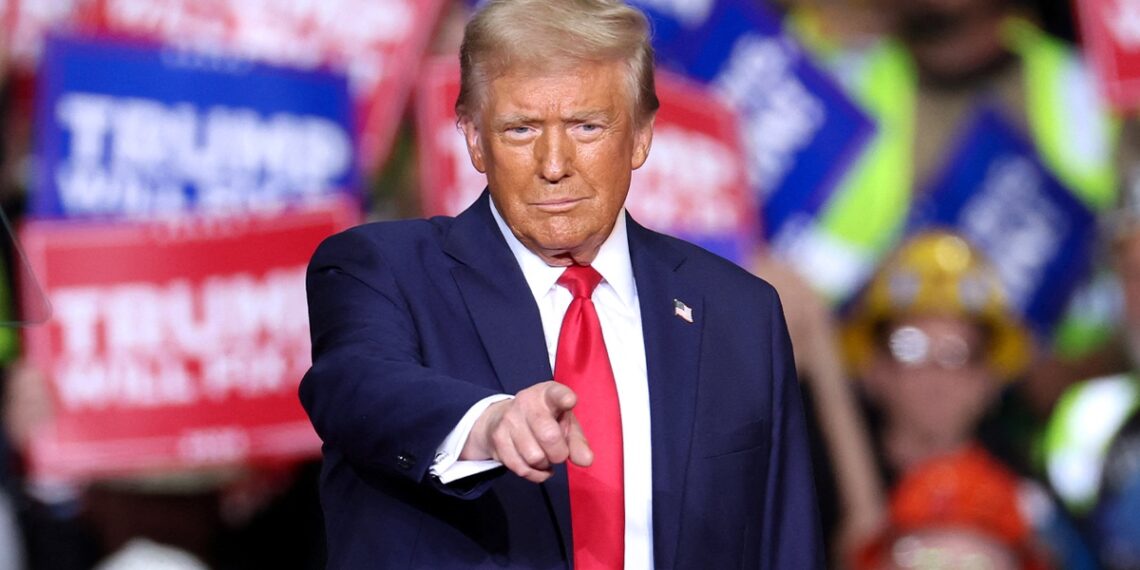The imposition of exemptions by Trump for electronics products created uncertainty throughout trade markets.
The recent tariff strategies from President Donald Trump produced business and consumer uncertainty especially regarding consumer electronics. The Trump administration issued confusing statements throughout the weekend which created uncertainty for Chinese trade relationships and device imports such as smartphones and laptops.
The U.S. Customs and Border Protection declared a temporary halt to impose tariffs on electronics while excluding these products from the administration’s reciprocal levies which amount to a 10% base rate for most countries and higher rates for China. The move indicated reduced pressure from increasing trade conflicts as it offered relief for technological supply chains. The tariff exemption program leaves some duties in effect since electronics continue to face other current tax regulations which make the situation complex.
The U.S. Commerce Secretary Howard Lutnick made it clear to ABC viewers on This Week Sunday that the exemption stands only until a specific period ends. The Commerce Secretary announced plans to impose sector-specific tariffs on semiconductors that could impact electronics production within a one to two month period. Trump later utilized social media to dispute any “exception” for electronics before stating they had been moved into separate categories. The President established a 20% tax on Chinese electronic products linked to fentanyl-related measures which created additional ambiguity regarding the policy’s extent. The multiple layers of tariffs will likely increase expenses according to economists who predict that these elevated costs will result in elevated prices for consumers.
The global electronics industry faces a cautious response from China because it operates as one of the leading international players in this sector. The Chinese ministry of commerce expressed gratitude for the limited tariff exemption while demanding that the United States abolish all trade restrictions between both nations. In a state-run editorial Vietnamese and Chinese media President Xi Jinping declared “There are no winners in a trade war.” Both countries need to defend global supply chains as well as encourage open trade according to him. The Chinese government made this appeal during an ongoing tit-for-tat escalation because Trump has imposed maximum 145% Chinese import tariffs from January and China responded with 125% duties on American goods and export restrictions on essential rare earth materials for chip and EV battery production.
The ongoing back-and-forth dialogue has intensified worldwide worries about international trade. The back-and-forth between Trump’s original tariffs and their subsequent reversals has caused market volatility while the pending semiconductor tariffs pose a new threat to supply chains. The future cost structure for electronics products including both personal devices and industrial systems remains unclear which could create financial pressure on manufacturers together with their customers. Trump maintains protectionist policies for U.S. manufacturing but his approach puts essential trade partners at risk of becoming isolated while China seeks tariff-free trade agreements.
The current electronics exemption provides businesses with temporary relief yet the unclear future tariff status keeps stakeholders in an anxious state. The current business environment demands companies to work with multiple exemptions and penalties while consumers expect rising prices. The global trade environment remains unpredictable because Trump’s administration continues to develop its next tariff stage as U.S.-China diplomatic relations reach an essential point. The coming period will demonstrate whether these policies transform supply chains or widen economic separation as the electronics field remains trapped between these two opposing forces.
Trump’s tariff exemption for electronics sparks widespread confusion.
Related Posts
© 2025 Newsweek World.
All rights reserved.










